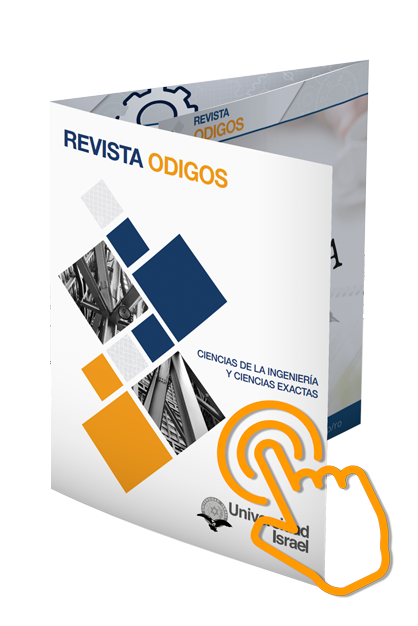Mejora de la calidad del software a través de la integración y entrega continua
DOI:
https://doi.org/10.35290/ro.v4n2.2023.899Palabras clave:
estrategia de desarrollo, formación combinada, calidad, software, automatización de pruebasResumen
En la actualidad existen muchas formas y métodos de desarrollo de software, los cuales pueden cubrir las necesidades para los que fueron creados o se van a crear, dejando de lado situaciones fundamentales y primordiales a tener en cuenta siempre, como lo son los procesos de seguridad y auditoría de la información. Ahora bien, cuando existen empresas públicas y/o privadas, dedicadas a desarrollar software de manera colaborativa, siempre se debe de tener en cuenta la calidad, medida por la eficiencia y eficacia, tanto en el producto de software, como en su proceso de construcción.
El presente artículo científico tiene como objetivo generar un enfoque para mejorar la calidad del software a través de la implementación de prácticas de integración y entrega continua. Se describen los beneficios de la integración y la entrega continua en el proceso de desarrollo de software, y se proporcionan recomendaciones sobre cómo implementar estas prácticas de manera efectiva.
A su vez, se presentan varios casos de estudio que ilustran cómo la integración continua y la entrega continua han mejorado la calidad del software en diferentes contextos de desarrollo. Como parte final, se concluye que la estos son prácticas esenciales para mejorar la calidad del software, reducir los costos de desarrollo y aumentar la satisfacción del cliente. Se recomienda que las organizaciones adopten estas prácticas y las integren en su proceso de desarrollo de software.
Descargas
Referencias
Anderson, D. (2010). Kanban: successful evolutionary change for your technology business. Blue Hole Press.
Beck, K., Beedle, M., Bennekum, A., Cockburn, A., Cunningham, W., Fowler, M., & Thomas, D. (2001). Manifesto for agile software development.
Fowler, M. (01 de mayo del 2006). Continuous integration. https://martinfowler.com/articles/continuousIntegration.html
Hossain, M. S., & Muhammad, G. (2016). Cloud-assisted industrial internet of things (iiot)–enabled framework for health monitoring. Computer Networks, 101, 192-202. https://doi.org/10.1016/j.comnet.2016.01.009
Humble, J., & Farley, D. (2011). Continuous delivery: reliable software releases through build, test, and deployment automation. Pearson Education.
Kim, G., Humble, J., Debois, P., Willis, J., & Forsgren, N. (2016). The DevOps Handbook: How to Create World-Class Agility. Reliability, and Security in Technology Organizations.
Martin, R. (2009). Clean code: a handbook of agile software craftsmanship. Pearson Education.
Pressman, R. (2014). Ingeniería del software: un enfoque práctico. McGraw Hill.
Rossel, S. (2017). Continuous Integration, Delivery, and Deployment: Reliable and faster software releases with automating builds, tests, and deployment. Packt Publishing Ltd.
Schwaber, K., & Sutherland, J. (2017). The Scrum guide. Scrum.org. https://www.scrum.org/resources/scrum-guide
Publicado
Número
Sección
Licencia
Derechos de autor 2023 Fabián Lizardo Caicedo Goyes

Esta obra está bajo una licencia internacional Creative Commons Atribución 4.0.
Los autores que participen de los procesos de evaluación y publicación de sus ediciones conservan sus derechos de autor, cediendo a la revista el derecho a la primera publicación, tal como establecen las condiciones de reconocimiento en la licencia Creative Commons Reconocimiento 4.0 Internacional (CC BY), donde los autores autorizan el libre acceso a sus obras, permitiendo que los lectores copien, distribuyan y transmitan por diversos medios, garantizando una amplia difusión del conocimiento científico publicado.
- Toda derivación, a partir de esta obra, deberá citar la fuente y a la primera publicación en esta revista. Se permiten derechos comerciales no lucrativos sobre sus contenidos.
- Los autores pueden realizar otros acuerdos contractuales independientes y adicionales para la distribución no exclusiva de la versión del artículo publicado en esta revista, es decir, podrán incluirlo en un repositorio institucional o publicarlo en un libro, siempre que indiquen claramente que el trabajo se publicó por primera vez en esta revista.
- Se permite y recomienda a los autores compartir su trabajo en línea, con la finalidad de intercambios productivos para una mayor y más rápida citación del trabajo como lo establece los efectos del movimiento ‘Acceso Abierto’.
- No puede aplicar términos legales o medidas tecnológicas que restrinjan legalmente a otros de hacer cualquier cosa que permita la licencia: https://creativecommons.org/licenses/by/4.0/deed.es
- La Revista ODIGOS es financiada completamente de los aportes realizados por nuestra entidad editora: Universidad Tecnológica Israel; por tal motivo, no establece cargos o cobros de ninguna índole a sus autores y colaboradores, así como tampoco genera pagos o remuneraciones de ningún tipo a ellos.
- Se asignará un Digital Object Identifier (DOI) a cada publicación.




